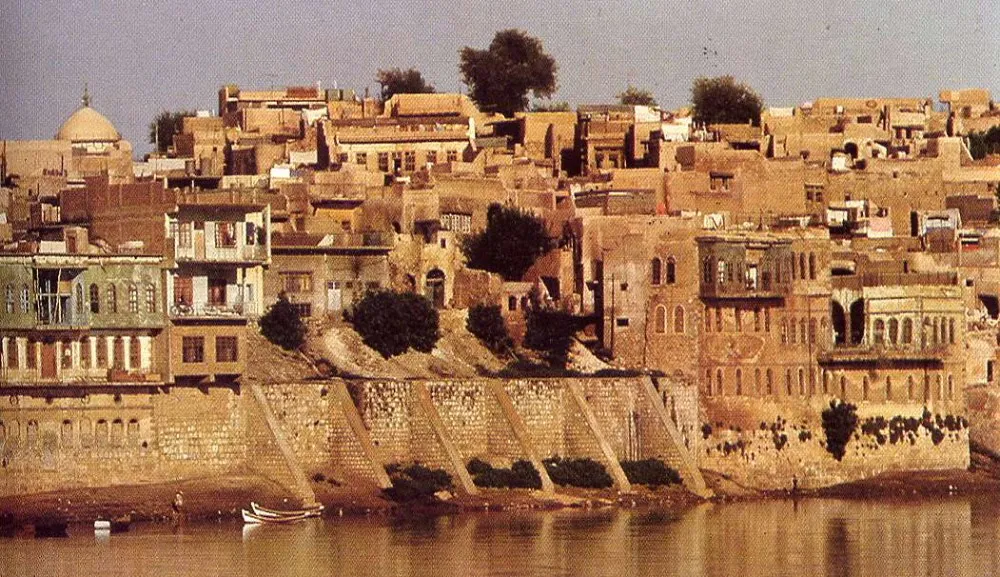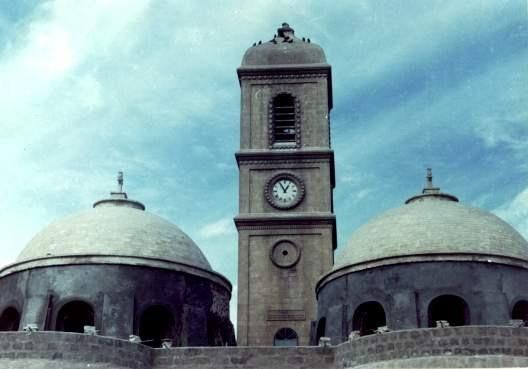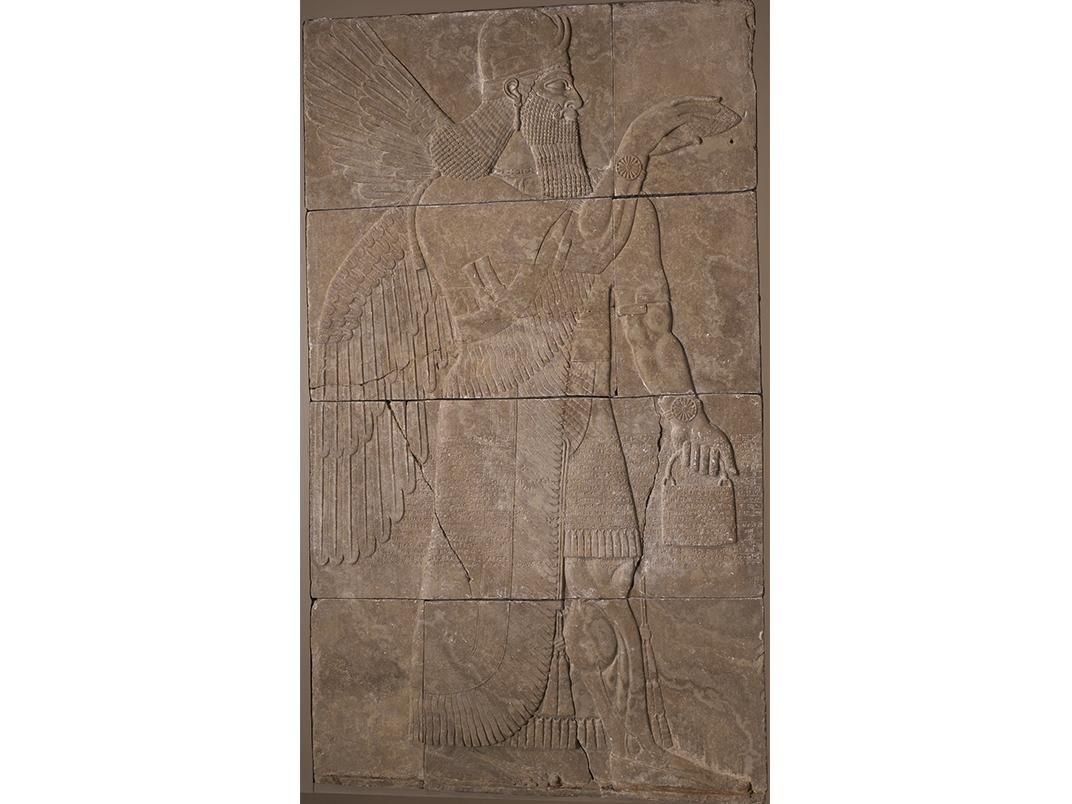Why We Need to Fight to Save Mosul’s Cultural Heritage
As the battle to save Iraq from ISIS continues, Smithsonian experts are helping local people preserve their history
:focal(812x398:813x399)/https://tf-cmsv2-smithsonianmag-media.s3.amazonaws.com/filer/37/23/3723da44-dc0a-45ff-a2e9-662016b81eab/ap_658858700229web.jpg)
Mosul is an ancient city on the banks of the Tigris River, adjacent to the even more ancient archaeological site of Nineveh, which looms high above modern minarets, and another Assyrian site, Nimrud, 20 miles to the south. The second largest city in Iraq, Mosul has long hosted an incredibly diverse religious and ethnic population including Sunni, Shia and Sufi Muslims, Christians, Jews, Zoroastrians, Sabaen-Mandaeans, and Shabaks, Arabs, Yezidis, Kurds, Turkmens, Armenians, Assyrians and others. These communities have, over centuries, left their exceptional cultural markings on the landscape—hundreds of mosques, churches, shrines, holy sites, graveyards, libraries and museums.
Mosul came under the control of the Islamic State (ISIS) in June of 2014. Coalition forces led by the U.S.-supported Iraqi army and the Kurdish Peshmerga launched a counterattack in October 2016 and have recently retaken most of the eastern half of the city. Clearly, freeing Mosul’s citizenry from the brutal grip of ISIS is the first priority of the current campaign. But as the battle becomes increasingly heated and focused on the historic old city, coalition forces are also cognizant of the need to protect the region’s cultural heritage.
When ISIS first took Mosul, it burned the city’s library destroying hundreds of historic manuscripts. Citizens, proud of their multicultural heritage, joined hands in a human chain and repelled ISIS’s first attempt to destroy the Sheikh Fathi mosque and shrine with stones, only to lose out the next day to bulldozers. The world winced when ISIS blew up the mosque and tomb of Nebi Yunis—the Biblical Jonah—and that of Nabi Jerjis, also known as Saint George, and cringed watching the ISIS-produced video of thugs destroying statues in the Mosul museum and carved reliefs at Nineveh. ISIS wanted to illustrate as virtue its fanatical drive to erase people’s history and identity; and the world rightly took it as the barbaric violation of human rights.
We are Katharyn Hanson, an archaeologist and fellow at the Smithsonian Institution’s Museum Conservation Institute who trains Iraqis in nearby Erbil, and Richard Kurin, the Smithsonian’s acting provost and under secretary for museums and research. We have been actively engaged over the past year training Iraqi cultural heritage practitioners and laying the groundwork to prevent further damage. To assist on the ground, experts from the U.S. Committee of the Blue Shield, the University of Pennsylvania and the Smithsonian Institution produced a pocket booklet Guide to Mosul Heritage in English, Arabic and Kurdish. Distributed to the troops now engaged in battle and in its second printing, the booklet provides maps, coordinates, satellite images and street view photographs of cultural heritage sites—so that their destruction can be avoided if possible.
Now, with the liberating forces beginning their final assault, the United States and its allies need to respect and help protect the heritage ISIS despises and prevent the repetition of anything similar to what happened in 2003 with the looting and destruction of Baghdad’s renowned National Museum of Iraq.
The U.S. reputation in the region will depend, in large part, upon the respect we show to the liberated as multicultural people, with religious beliefs, languages, heritage collections and sites that reflect and symbolize their histories and identities.
Unlike ISIS or even the Assad government in Syria, U.S. forces recognize their obligations under the 1954 Hague Convention on the “Protection of Cultural Property in the Event of Armed Conflict.” The U.S. Committee of the Blue Shield has provided a “no strike list” to the U.S. Department of Defense so that cultural heritage sites can be taken into consideration in the bombing campaign.
/https://tf-cmsv2-smithsonianmag-media.s3.amazonaws.com/filer/2c/ee/2cee4f3d-0ee1-440c-b23e-82f9f5fe2351/img1322web_copy.jpg)
When fully secure, the greatest attention will correctly go to relieving suffering and rebuilding the city’s civic infrastructure, governance and economy. Cultural heritage, too, will play an important role in Mosul’s revitalization, both in terms of embracing freedoms of worship, speech and assembly, but also, eventually, rebuilding the city’s intellectual, tourism and cultural production industries.
Over the past few years, with support from the U.S. State Department, conservators, archaeologists and museum specialists from the Smithsonian Institution, the University of Pennsylvania and University of Delaware have worked closely with local counterparts at the Iraqi Institute for the Conservation of Antiquities and Heritage in Erbil to train some 500 cultural heritage workers from all parts of Iraq—so they could save, treat and prepare collections and sites for the public good.
Last summer, the Smithsonian hosted a “First Aid for Culture” course in Washington, D.C. that included professionals from Iraq who will help restore heritage in Mosul after the conflict. A few weeks ago, the two of us, along with others from the Smithsonian and the International Centre for the Study of the Preservation and Restoration of Cultural Property, met in Erbil with Iraqi and Kurdish officials and experts, U.S. government and special forces officers, and UNESCO representatives to plan coordinated efforts to stabilize, preserve and protect the damaged cultural sites in ISIS impacted areas. We’ve put in place agreements to move forward with Iraqi organizations, as well as with UNESCO, as Irina Bokova, its Director-General, announced at Davos.
There is much to do. Important sites must be de-mined, fenced and guarded prior to conservators mapping, identifying, gathering, cataloging and storing material remains—so that they later can be restored, preserved, studied and presented to the public.
In Washington, D.C., we understand the civic and educational value of our monuments and museums, and enjoy the economic benefits that flow from their appreciation. Our fellow humans in Mosul have monuments, sites and collections that reflect the richness of their society, as well as the sweep of civilization and can well-serve their healing in the future. We need to help them have that opportunity.






/https://tf-cmsv2-smithsonianmag-media.s3.amazonaws.com/accounts/headshot/kurin.png)